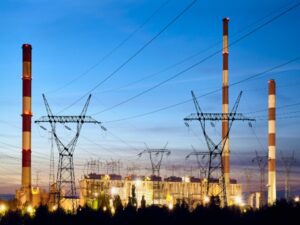South Africa announced at the Glasgow climate summit that it secured investments of R131 billion from the united nations to assist with the installation of clean energy to accelerate the country’s transition from coal power and minimise pollution.
While South Africa is committed to the pledge of reducing its overall emissions between now and 2030 as a means to tackle climate change – itstill highly depends on coal which provides 87 percent of the nation’s electricity. Rentech’s Industrial Business Manager, Gerrit Steyn states that the world still has abundant reserves of coal which are distributed globally and is advantageous because of its affordability and stable prices in comparison to gas and oil. “Coal, which powered the industrial revolution, is still the world’s largest energy source for electricity generation,” he says. “The principal disadvantage of coal is that it is polluting and releases the most carbon dioxide per kilowatt-hour generated of all energy sources for power generation. Coal stations release huge amounts of carbon dioxide, gaseous compounds, heavy metals, such as lead and arsenic, and radioactive materials such as thorium and uranium, into the atmosphere. The waste from coal stations is either poured into the air or dumped onto ash tips,” Steyn adds. Scientific evidence reveals that global warming is caused by the rising levels of carbon dioxide in the atmosphere produced by both human activities and industrialisation. “It has become increasingly recognised that renewable forms of energy should replace fossil fuel where possible and that this must be done soon,” Steyn says, “Of course, there are limits to what can be replaced as we unfortunately still depend on fossil fuels for transport, both now and in the foreseeable future. Other areas, such as electricity production using fossil fuel, can and should be phased out.”“The strong growth of wind and solar power generation has boosted the rapid energy transition driven by electricity and decarbonisation of the energy system, including the decline in coal, oil, and gas, in that order. By mid-century, experts predict an energy mix split roughly equally between fossil and non-fossil sources, taking into account expected developments in policies, technologies, and associated costs,” Steyn adds.
A method of continuing with the use of fossil fuels is by adopting and combining new and emerging technologies. Steyn further stated that there are tough business and policies to be made, but many opportunities for those who master the wave of the energy transition. With existing technologies, it is a matter of political will to change the status quo and move away from fossil fuels. Technical changes are taking place at all stages of the electricity vertical chain – from generation to storage and batteries, through to the way energy is consumed. “Much depends on governments around the world having the will and energy to drive a non-fossil fuel policy. In the end, these choices boil down to a basic moral decision for the sake of future generations,” Steyn concludes.







